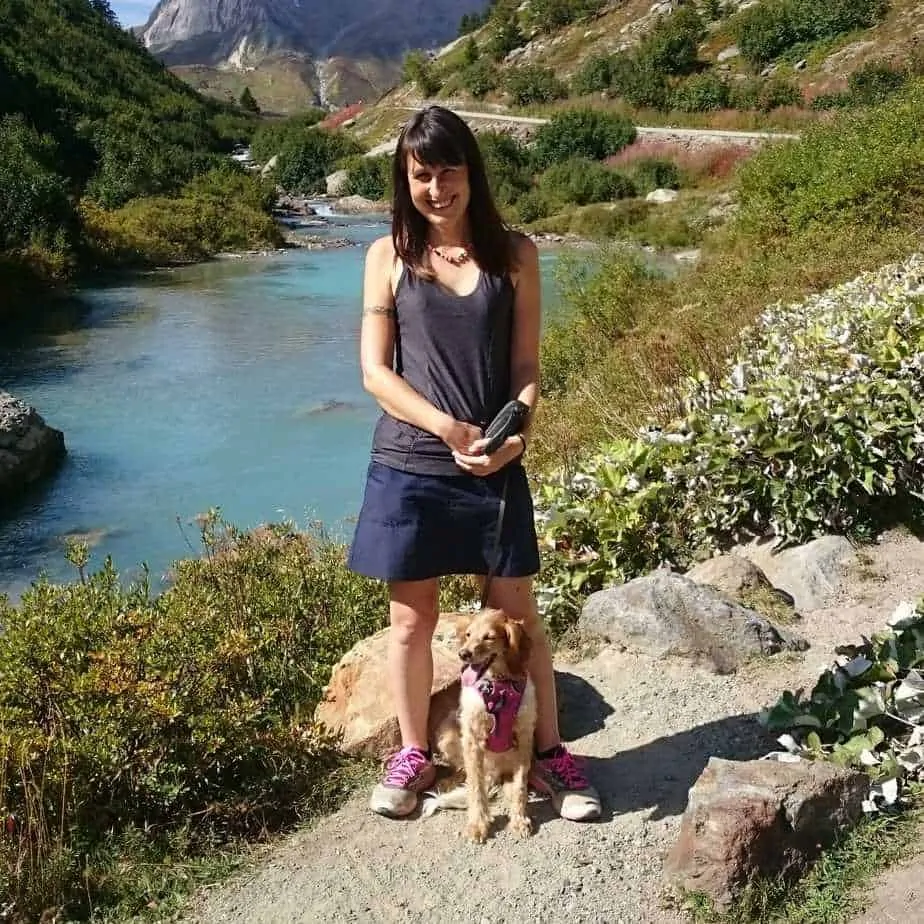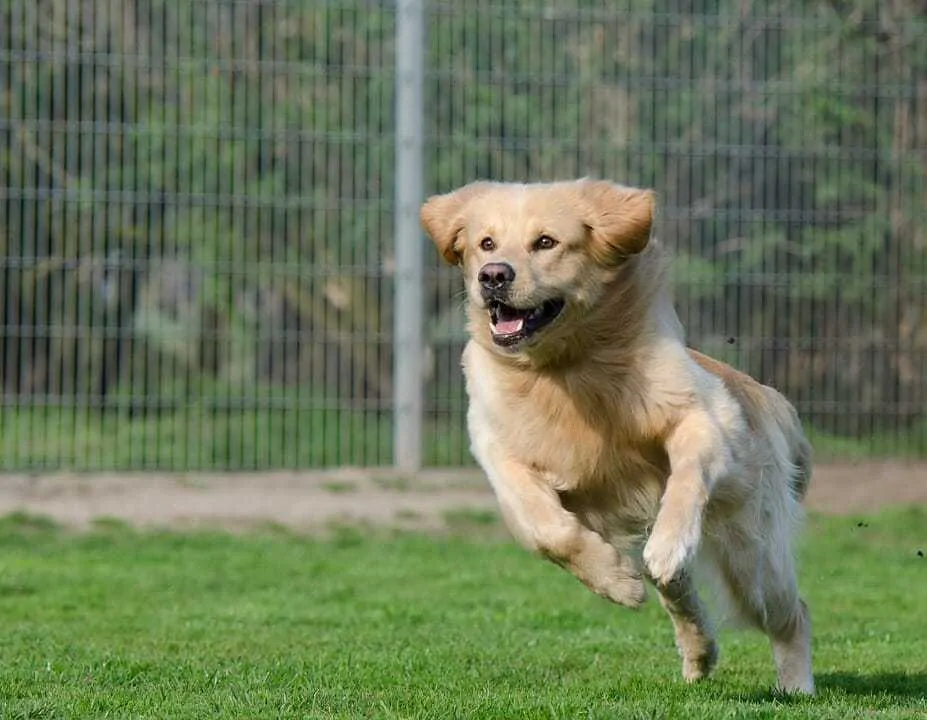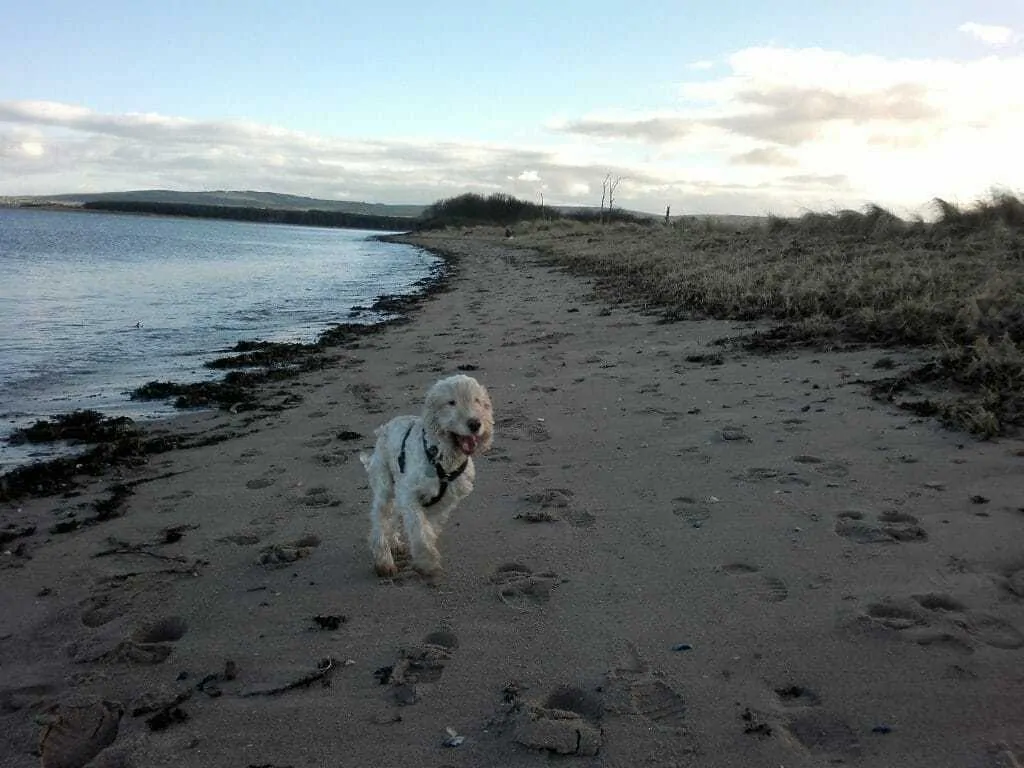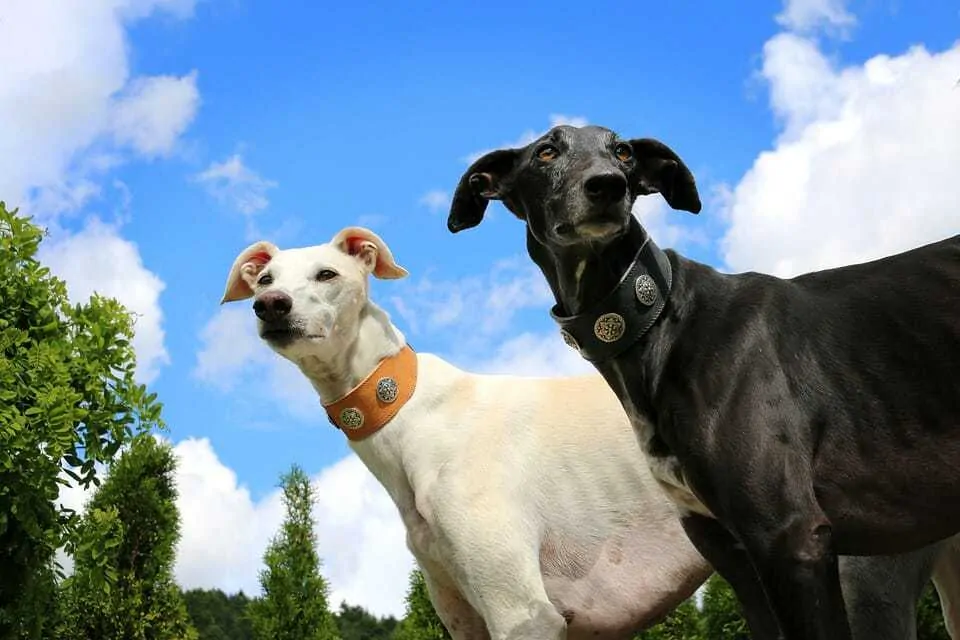Want to learn how to train your dog to come when called and have a rock solid recall? If you are a dog lover, you will likely have seen the viral video of Fenton the dog chasing the deer in a park, completely ignoring his owner. Whilst this may have seemed comical, it was lucky that Fenton didn’t get injured during the chase. In the UK, chasing livestock can also result in the dog being shot by the farmer. It is serious stuff.
If you want to be able to let your dog have more freedom when on walks, a solid recall is a must. Your dog must be able to master coming when called. A dog stealing a picnic in the park, or pestering another dog that is minding its own business, or running out in front of cars or cyclists is a pest at best and, at worst, a safety hazard.
It can be one of the trickiest behaviors to train reliably so it is really important to ensure that you set your dog up for success, you are super consistent and that you don’t expect too much too fast.
Contents
1. Set your dog up for success to come when called – start with a long line
Even when you are working in an enclosed space and training your dog to come when called, using a long line is important. If you are using a long line it is important to have your dog on a harness, rather than just a collar. If they run quickly to the end of the line on a collar they can put a lot of pressure on their neck and possibly give themselves a nasty injury. The harness distributes the pressure more evenly on a sturdier part of the body.
I use the Company of Animals Long Line. It is great for teaching your dog and available in a 5 and 10 m length. They are lightweight, soft and don’t have a handle loop, making them safer for trailing on the ground.
It is important to make sure that long lines are only used in open, flat spaces. If there are lots of trees or hazards the line can get wrapped around, it can be dangerous. Try to avoid letting them unravel quickly in your hands too as they can give you a nasty burn if you are not careful.
I also use a Ruffwear Front Range Harness as they are comfortable and supportive and they have a handy front lead loop as well as the standard one on the top for training your dog. This can be useful for working on loose lead walking training. They are one of the more expensive harness options for training your dog, but my dog’s ones have withstood a lot of wear and adventures and are still going strong.
When you are in an open space and want your dog to come when called, the long line ensures that you won’t have a run-away dog and it also allows you to gently prompt and guide your dog back towards you so that you can reward them when they do come close.
Using a long line whilst working on Annie’s recall
2. Don’t start training in a field surrounded by sheep or squirrels
Okay, so I don’t imagine you would try training a recall in a super distracting environment like that, but trying to start work on recall with just small distractions can be asking too much at the beginning.
Once you move on from your garden or other secure space, pick an area that your dog is familiar with that they usually offer calm behavior in. If you pick somewhere you haven’t been before, the new smells and sights may be too distracting. If it is somewhere that they normally associate with exciting play then, again, you are not setting them up for success.
Build up the level of distractions gradually as you teach your dog to come when called.
The most distracting environment for Daisy and Sam – the Beach. Daisy was happy to come back for her ball and Sam for a goody that made him lick his chops in delight after they learned to come when called
3. Make sure your Cue for your dog to come when called is associated with good things
If you have already worked on recall training before with little success, you maybe want to consider using another word instead of the one you used previously. You may have inadvertently taught your dog that this word means being punished, or that they will be put on the lead whenever it is called or, simply, that the word means they get to sniff around in a lovely environment for as long as they like.
Pick a new word that you can start afresh with to teach your dog to come when called, something that means super, super tasty treats when they come to you when it is called.
Before you start to work on recall you can “Charge” the cue. This means that you teach the dog that when they hear this word they are going to get something really yummy. You may just want to do a few sessions in the house where you just say the word and offer a treat. Make sure they are not offering other behaviours when you do this though, otherwise they may think the word relates to you asking for that instead.
You may also wish to use a visual cue alongside your verbal one, this can be useful if you are in a noisy environment or you are further away on a windy day. I used a verbal cue with Daisy and Sam and it proved to be really useful when Daisy, in her older years, started to go deaf.
When working in a more distracting environment, switching up the rewards can also help to keep your dog motivated. Always pick high value, super tasty treats or, if they are motivated by play, perhaps a favourite tug toy. Daisy would do anything for a squeaky ball and this would often be more motivating for her than a food reward. We never went anywhere without it and we always had a spare, just in case!
4. Repetition and reward are crucial to teach your dog to come when called
Everytime you succeed with having your dog to come when called, you need to reward them and reward them well. The treats need to be super tasty and, if they come back super quickly, maybe give them a “jackpot”: lots of pieces of the tasty treat quickly, one after another.
5. Don’t rush it – build the steps up gradually
Start small. Work in a space that has minimal distractions, is familiar and with your dog on the long line. You need to start with small distances. Don’t ask your dog to go right to the end of the line and expect an immediate, perfect recall. Baby steps!
My first recommended step would be that when your dog is walking by your side, start running away from them and enthusiastically shout the cue. Usually the excitement of this will encourage your dog to follow by your side you. If they do, be sure to reward them big style!
The next step is to move onto waiting until your dog has walked a short distance away from you and then you run away from them, repeating the steps from above. If they follow you and catch up, make sure you give big praise and drop the treat on the ground and, once they have just finished eating, run in the opposite direction and repeat the process. Keep working on this technique for a number of sessions, over a few days.
Once they are reliably recalling after you run in the opposite direction, you can then start to work on a recall when you remain stationary. Wait until they move away from you and then ask for a recall. Build up the distance gradually over a number of sessions. Make sure you maintain the enthusiasm, high value rewards and repetition.
This is the point when you would start working on the recall off lead. Always start in an enclosed space, before moving into an open area.
I also taught my previous dogs, Daisy and Sam, to offer an automatic “sit” as part of the recall command. I didn’t introduce this until I was getting a reliable recall, but it just made it easier for me to pop them back on the lead if I needed to.
Always start off lead recall training in a safe and enclosed area
6. You need to be more motivating than the distractions around you
You need to be exciting, enthusiastic and all geared up with the tastiest treats possible. If you shout in a dull tone and then only have a dry bit of dog kibble, this is not going to motivate your dog to come back to you over the lovely smells and freedom they are enjoying in the park.
Be happy, excited and use welcoming body language as you call your dog. Crouching down and opening your arms can help. Get ready with the treats that your dog will do anything for too. You may look like a plonker standing in the middle of the park doing this but, if it gets your dog to come back to you with enthusiasm, surely it is worth it?
The food has to be their absolute favorite as you call your dog. You should save these top treats so that you are only using them for a recall training session. That way, they are anticipating the best goodies every time you work on this.
Sam LOVED the beach but he was still happy to give us an enthusiastic recall when yummy treats were involved
7. Don’t over use the cue as you call your dog – you don’t want it to lose its effectiveness
If your cue is “come”, be careful not to use it too often. If you shout your dog ten times and they don’t come back, they will just learn that the word means they can have a great time strolling around sniffing. Initially, you may want to wait until you can see that your dog is starting to head back to you and then you can use the cue and reward them when they return. That way, you are pairing the word with returning to you and a tasty food reward.
Don’t ask for a recall when your dog is involved in a task that you know they are unlikely to come back from. For example, they may be enjoying a good sniff of a squirrel scent. If you know this is likely more rewarding than the treats you have at that stage, don’t waste the cue. It will only teach them to ignore it. In this instance, just go over and pop them on the lead without using any recall command.
If their recall is becoming very unreliable when you call your dog, it would be a good idea to go back to working on things whilst using a long line, before things get out of control.
If you know your dog is too distracted to give you a successful recall, maybe rolling in something stinky, don’t waste your cue. Just go over and pop them on the lead instead
8. Be realistic with dog training – mistakes will happen
Not every recall training session is going to go well. Don’t beat yourself up and don’t give your dog a hard time either. If the session is not going well, don’t keep trying. Accept that today is not the best day and stop. If you keep on persevering without results, you will be damaging future success. Try to end on a high note, don’t push a session too long or hard.
9. Ask your dog to recall to other people
Once you have a reliable recall with your dog in the park you have been working on it in, it is important to “generalise” in the next step of recall dog training. You will want to ask them to recall to other people and in other environments. As always, don’t try too much, too fast though. Start with one new person and, if you have success, another in the next session and so on.
You can also ask friends and family to help you with increasing the level of distraction you are asking your dog to recall under. Perhaps they can walk past you with their dog, maybe they can have their dog off lead around you. Again this has to be gradually introduced though. Remember the mantra of “setting them up for success”. If your dog won’t come back to you when you introduce a new step or distraction, you have gone too far. Pop your dog on the lead for that session as you are teaching your dog and, in the next session, go back a step and work on that a bit more.
If you repeatedly let your dog play with other dogs without being able to recall them, you are going to put your training back to square one. You will teach your dog that playing with other dogs is much more rewarding than what you can provide, so why would they want to come back.
Asking for a recall when your dog is playing with other dogs is a big ask. Lots of groundwork needs to have been done before getting to this stage as you teach your dog.
10. Keep recall fun
By turning recall into a game it can help you to remain more motivating than the environment around you. Why not try playing hide and seek. You hide somewhere in the park, have someone else hold your dog and when you are ready, shout your dog and get them to find you.
Continue to also play chase, as you did at the start of the training, but this time they are off lead. Run fast in the opposite direction to them and use the recall cue as you call your dog, when they reach you then you can reward them.
11. Be aware of breed traits – some breeds may need more work than others
Every dog is an individual but there are some breeds that are “sticky” breeds that tend to be easier to train to recall and then there are the breeds that can be more of a challenge.
Herding dogs, like Collies, tend to have a desire to stick by the side of their people. Dogs with a high prey drive can be more tricky.
Sighthounds, like Greyhounds, or hunting dogs, like Brittany Spaniels, are two breeds that can be a little more challenging when it comes to achieving a reliable recall. It just means that you may need to work more on this and be careful about where you do let them off once you start to introduce this step. I have had to work much harder on achieving a good recall from Annie, my Brittany Spaniel, than I did with my Cocker Spaniels.
There may also be certain environments you may just not let them off in. If they are in an area where there are lots of small furries, it may be safer to leave them on lead.
Every day is an individual but some breeds may need more work on their recall than others, Sighthounds recall can sometimes need a bit more work
12. Can I not just jerk the lead hard when I say “Come”? Surely this will teach them to return when called?
Perhaps this will work for some dogs, but it will be working because they are responding out of fear. Do you want to have a relationship like this with your dog? Also, some dogs will respond to this when on the lead but, once you let them off, they associate the word “come” with the leash jerk – why would they want to come back to that? The same goes for scolding the dog if they don’t come back to you. Why would they want to come back to you if all you are going to do is shout at them?
It is also important that, once you do let your dog off lead, you don’t put them back on the lead everytime you call them back. You should make a point of calling them and then reward them even further, after they have had their treat, by letting them enjoy freedom for even longer. You don’t want them to associate the recall cue with always going back on the lead.
When your dog provides a nice recall, it can be a good idea to randomly touch their collar or show the lead without putting them back on it. That way, they are less likely to run off when you do actually want to put them on.
13. If it is not reliable – don’t have your dog off lead, it’s that simple
If you know your dog is unlikely to come back to you, don’t let them off. Not only are you increasing the chance of them going missing, but it is not fair on other dogs, animals and people around you. Some dogs don’t like having other dogs right up in their grill and, if you can’t get your dog back in this scenario, you are risking them getting bitten and you are putting the other dog and their owner in an unfair position.
If there are livestock around, your dog is at risk of stressing them out or injuring them and, in the UK, the farmer has the right to shoot a dog that is out of control amongst his animals. I never have my dogs off near livestock. I just don’t think it is worth the risk.
If a child is nervous of strange dogs and your exuberant young dog is trying to say hello and you are at the other end of the park, you are likely helping to make the child fear dogs even more.
On a walk near Livestock, so Daisy and Sam were kept on lead
14. Watch out for adolescent selective deafness as you train your dog to come when called
I have often heard people comment on how their new, young puppy has an amazing recall. He never leaves their side and always comes back when called. They may mention that they didn’t even have to do any training and that they have been so lucky.
When a pup is in its early fear phase, they will usually stay close to their people. Once they reach adolescence and they become more brave and adventurous, the recall you thought you had usually goes completely out of the window. It is important to start from scratch at this stage to train your dog to come when called.
Hope this guide on how to train your dog to come was useful. Have fun, be patient and enjoy watching your bond with your dog grow. It is a great feeling when a dog rushes back to you the instant you ask them too!

Gemma is an official dog nut and passionate traveller. Originally from the wonderful city of Edinburgh in Scotland, Gemma is now wandering across Europe with her rescue dog Annie. For ten years Gemma loved being surrounded by all things canine 24/7 whilst she ran a specialist doggy shop. The shop was a great community hub and, along with working closely with local rescues, Gemma provided customer support relating to canine behaviour and nutrition. It was a passion project and one that Gemma felt privileged to have created. She is also studying towards an Advanced Diploma in Canine Behaviour and is a huge advocate of dog rescue and promoting scientific methods of dog training.







